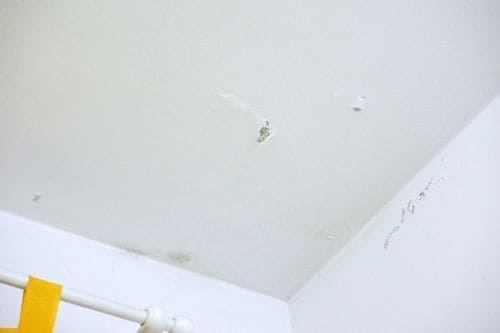Dampness in walls is a common but serious problem that can affect both the structure of your home and the health of its inhabitants. Ranging from stains and mould to structural damage, damp is a silent enemy that needs to be tackled seriously and with knowledge. In this guide, we will explore how to identify damp, understand its causes and apply effective solutions to eradicate and prevent it in the future.
Identifying damp
Recognising the signs
Correctly identifying damp is the first step towards an effective solution. Signs of dampness in walls can range from obvious water stains and mould growth to subtle changes in the texture of the wall covering. Dampness can manifest itself in different ways depending on its origin and location. For example, moisture appearing on the underside of walls is often indicative of capillary rise, while stains near windows or ceilings may signal leaks. It is crucial to be aware of these signs and act immediately to prevent further damage.
Contact our professionals to paint your home
Professional assessment
In many cases, professional assessment is essential to accurately identify the cause of dampness. An expert can use advanced tools such as thermal imaging cameras and moisture meters to make an accurate diagnosis. This professional assessment not only helps to identify the source of the problem, but also provides a clear picture of the extent of the damage, allowing for more effective treatment. If you suspect a serious or recurring damp problem, contacting a damp removal professional is an essential step.
Common causes of damp
External leaks
One of the most common causes of damp is leaks from outside. This can be due to a variety of factors, such as a damaged roof, blocked gutters, or poor waterproofing on external walls. These leaks can be more obvious during times of heavy rain, and timely repairs are essential to prevent water seeping in and causing further damage.
Internal problems
Dampness can also originate inside the house due to everyday activities such as cooking, bathing and drying clothes. This is exacerbated in houses with insufficient ventilation, where moisture accumulates and condenses on the walls. Ensuring that the house is adequately ventilated and using dehumidifiers when necessary can help control this type of dampness.
Capillary rise
Capillary rise occurs when moisture from the ground rises up the walls, especially in older buildings that lack an effective moisture barrier. This results in damp patches on the underside of walls and may require specific solutions, such as the installation of a new damp barrier.
Damp treatment
Solutions for external leaks
For external leaks, it is essential to address the source of the problem. This may include repairing or replacing damaged roofs, cleaning and repairing gutters, and waterproofing exterior walls. These repairs not only fix the current dampness, but also prevent future problems, thus protecting the structure of your home in the long term.
Tackling internal problems
For internally generated moisture, improving ventilation and moisture control is key. Using exhaust fans in bathrooms and kitchens, opening windows regularly to allow air flow and using dehumidifiers in moisture-prone areas are effective strategies. In addition, consider habits such as air-drying clothes and using lids when cooking to minimise moisture generation.
Remedies for capillary rise
In the case of capillary rising, solutions can be more technical, such as injecting chemicals to create a waterproof barrier or installing a new physical moisture barrier. These methods, usually carried out by professionals, can provide a durable solution for older buildings vulnerable to this problem.
Damp prevention
Regular maintenance
A proactive approach to maintenance is crucial to prevent damp. This includes regular inspections of the roof, gutters and external walls to detect and repair any damage that may allow water ingress. In addition, maintaining good drainage around the house is essential to prevent water accumulation near the foundation.
Ventilation improvements
Optimising ventilation throughout the house is key to controlling indoor humidity. Consider installing mechanical ventilation systems in moisture-prone areas. In more humid climates, the use of dehumidifiers can be an effective solution to maintain a healthy indoor humidity level.
Conscious use of water in the home
Being aware of water use inside the home can significantly reduce indoor humidity. Simple actions such as using lids when cooking, drying clothes outside and avoiding activities that generate a lot of moisture indoors can make a big difference. Water efficiency education is an important component of moisture prevention.
Conclusion and additional resources
Moisture in walls is a complex problem that requires careful attention and effective measures. From recognising the early signs to implementing practical, preventative solutions, every step is crucial to protecting your home and the health of its occupants. In addition to regular maintenance and prevention, education and professional advice are essential. For more detailed information, we recommend you review the Property Care Association’s guide to investigating dampness, which provides a comprehensive overview of the issue: Investigating Dampness – Property Care Association.


